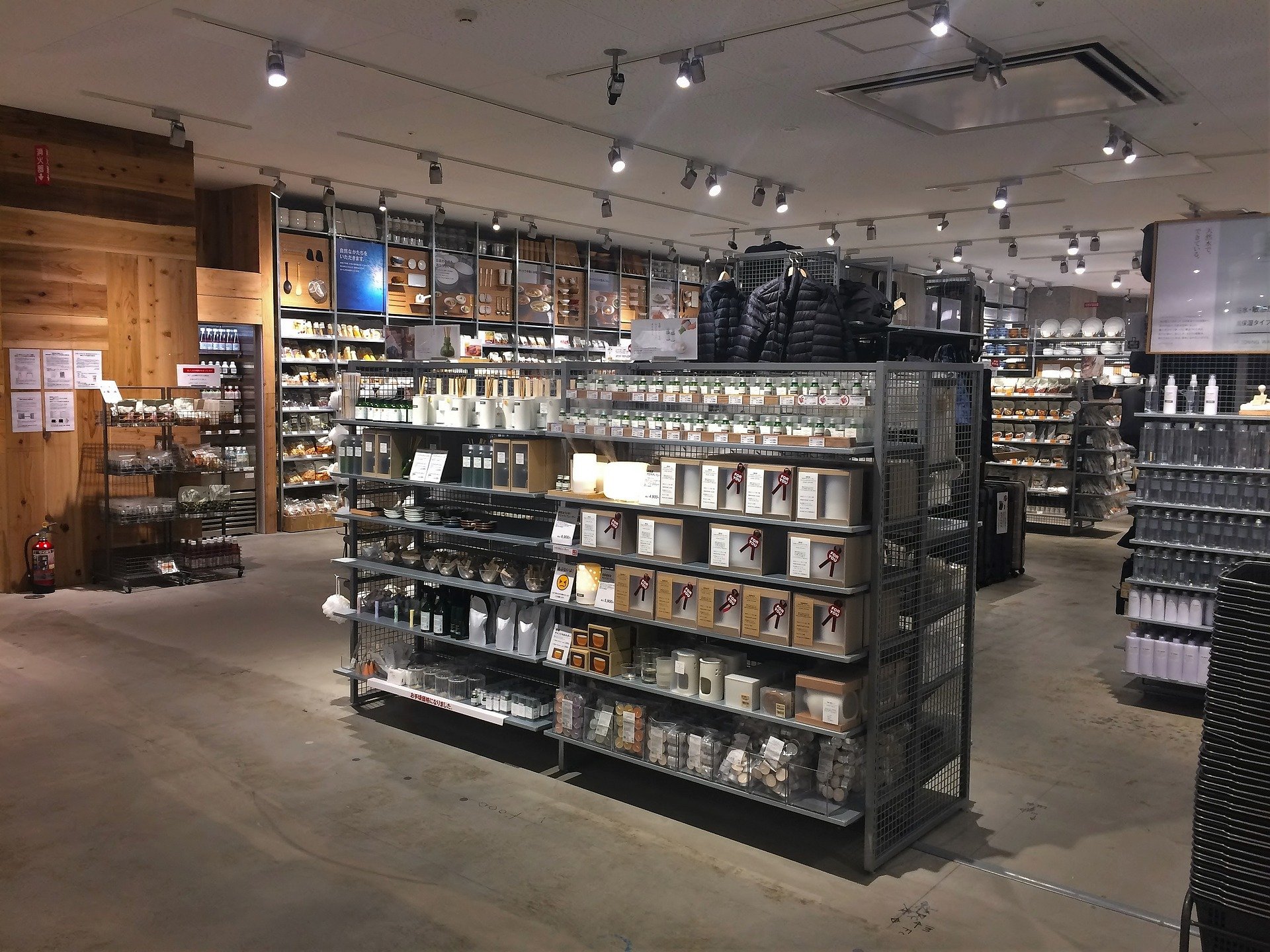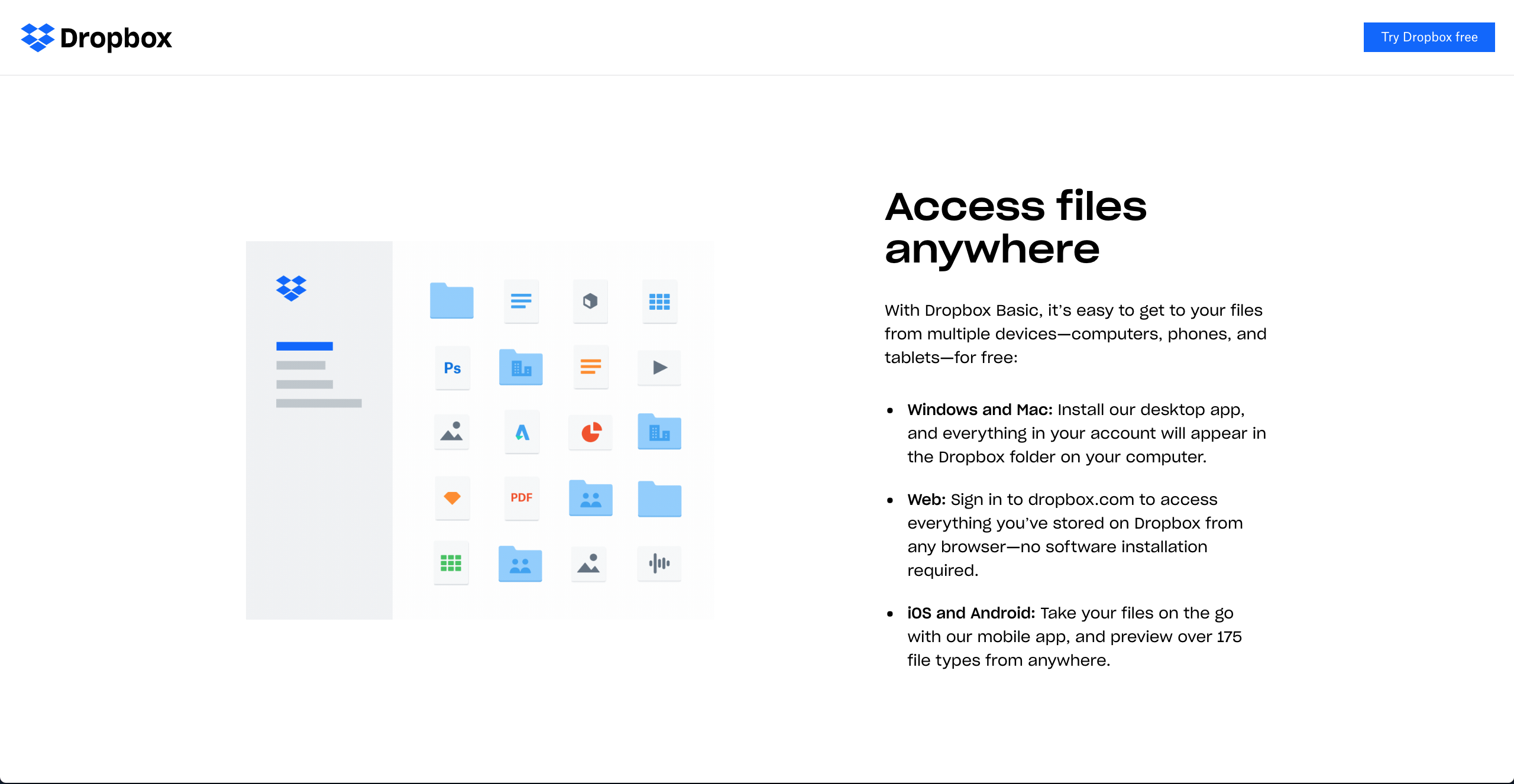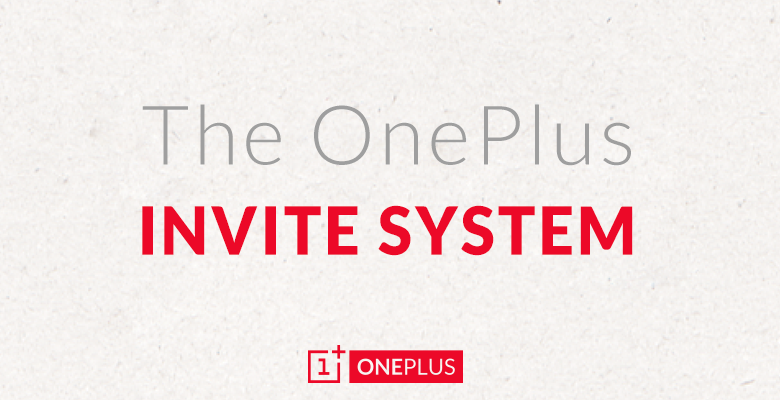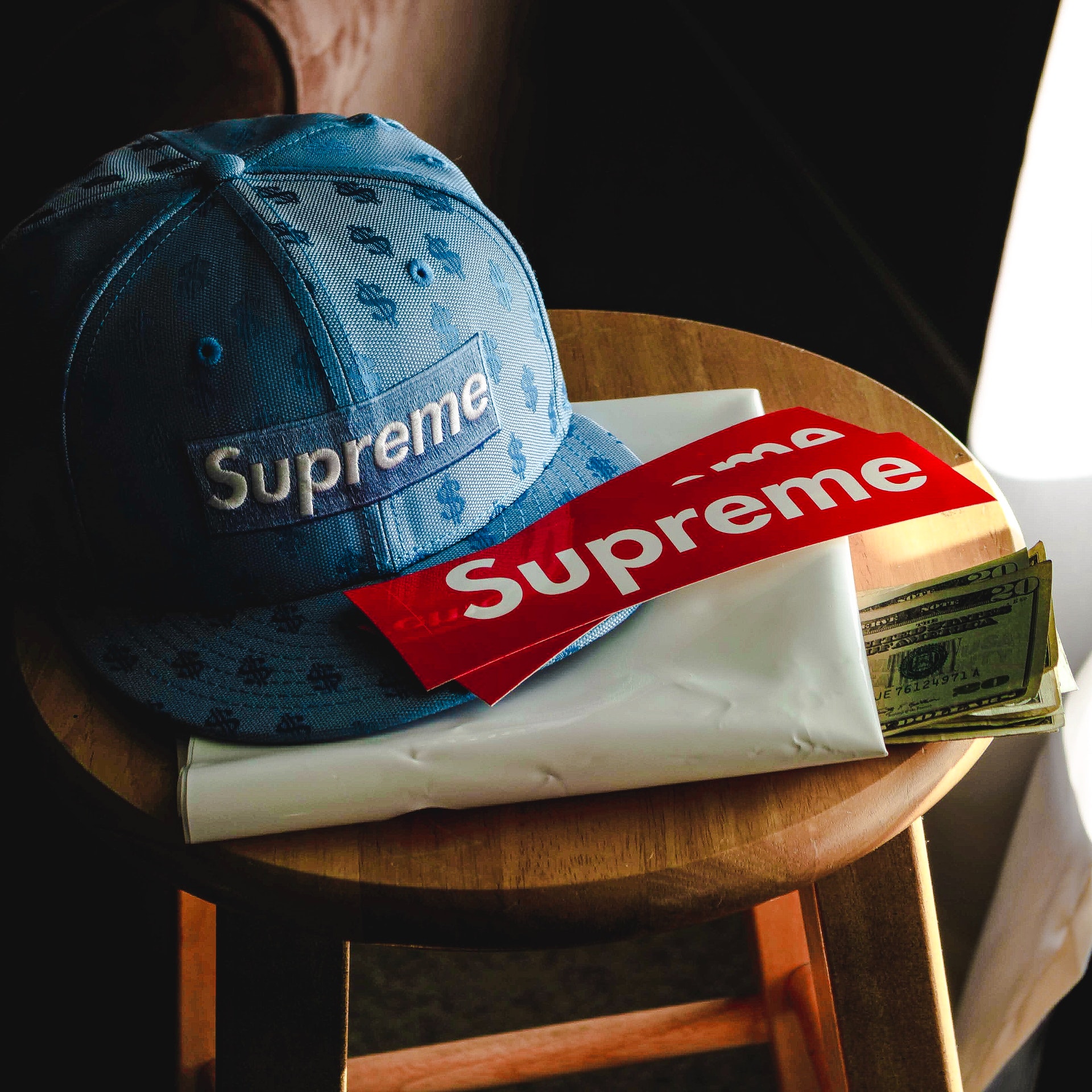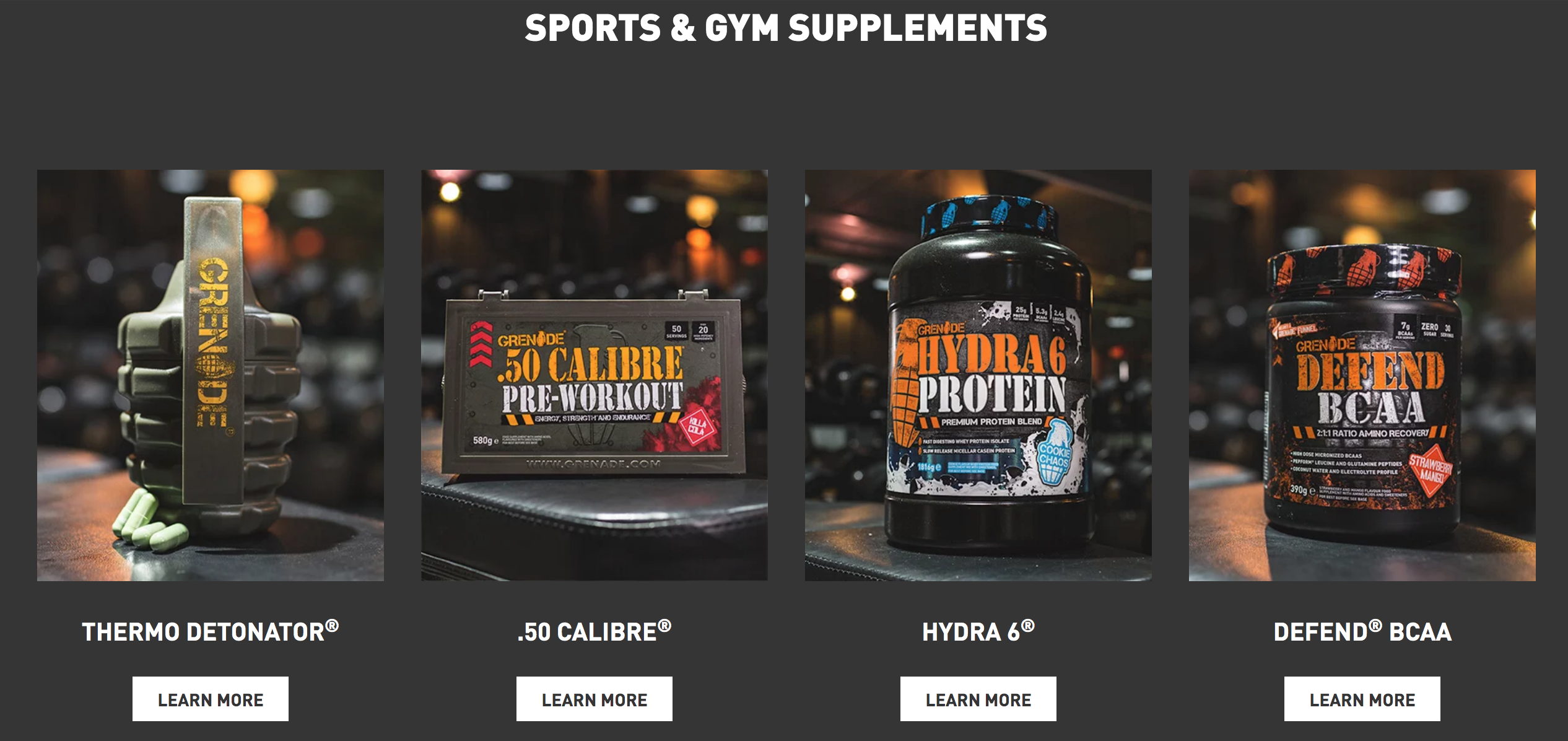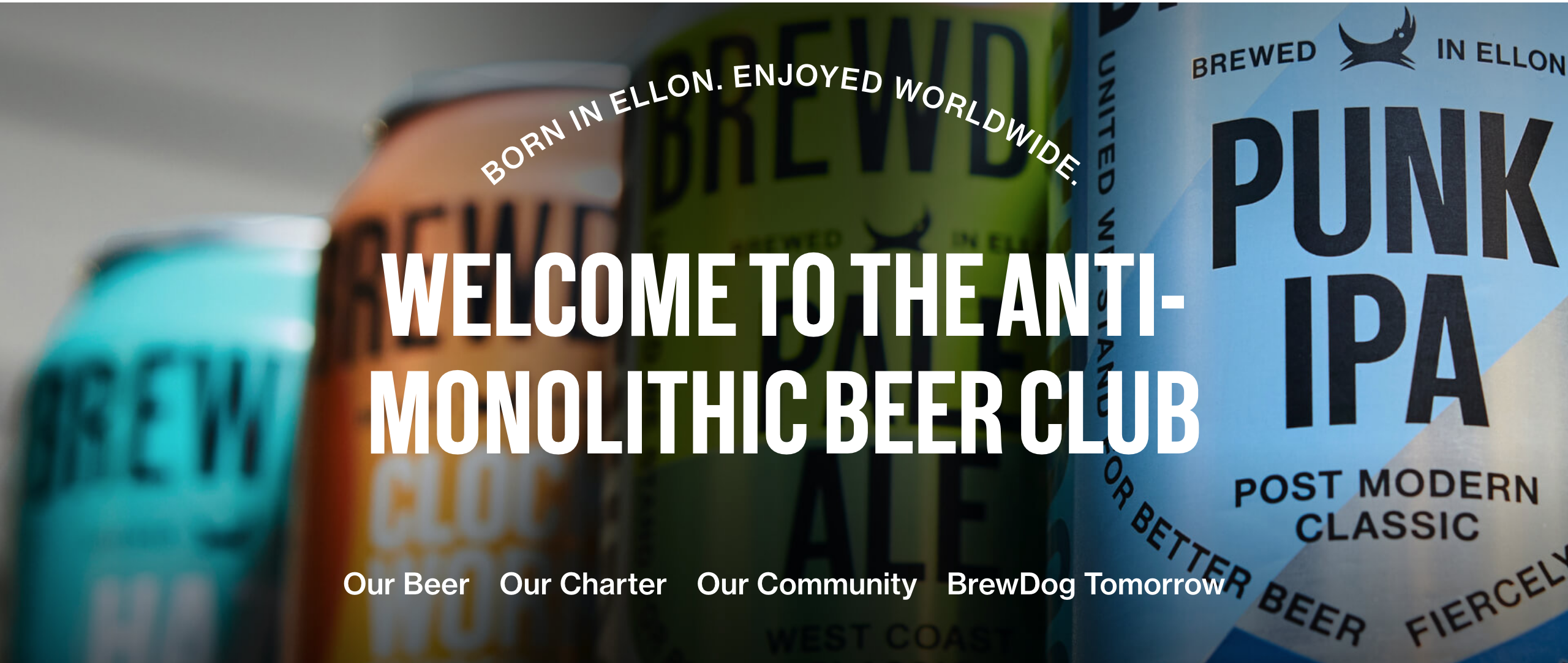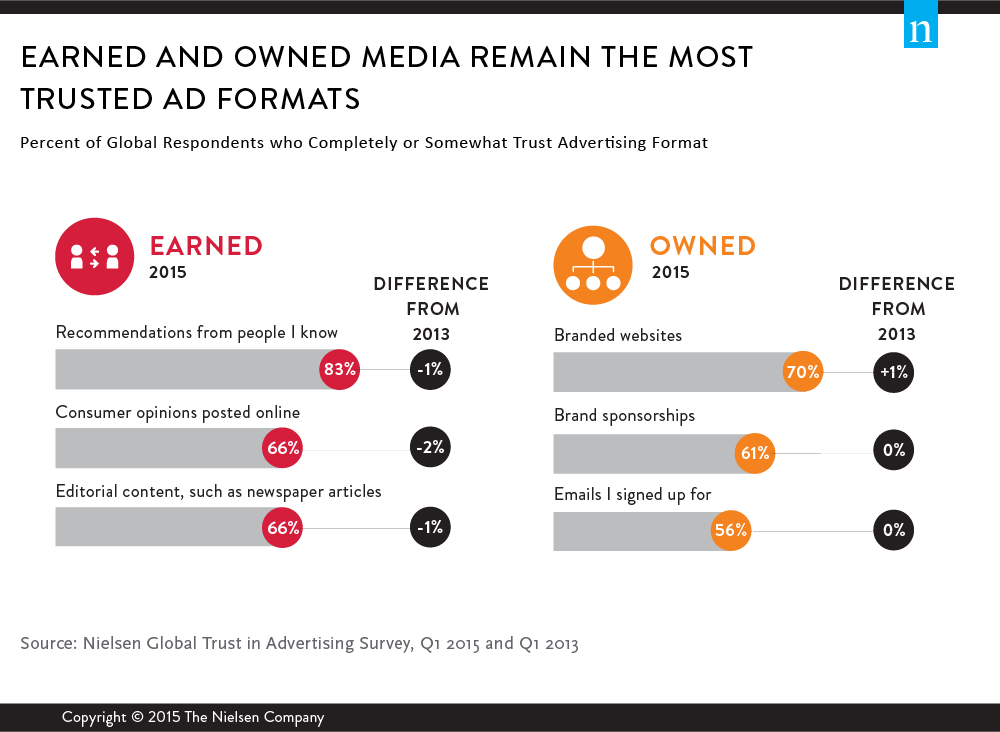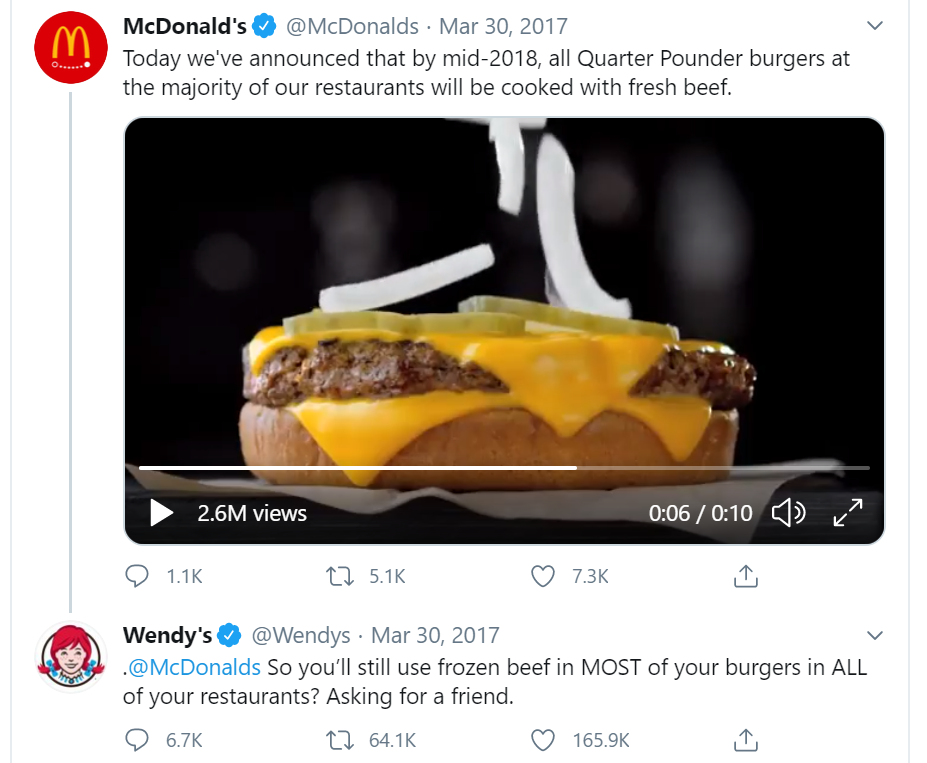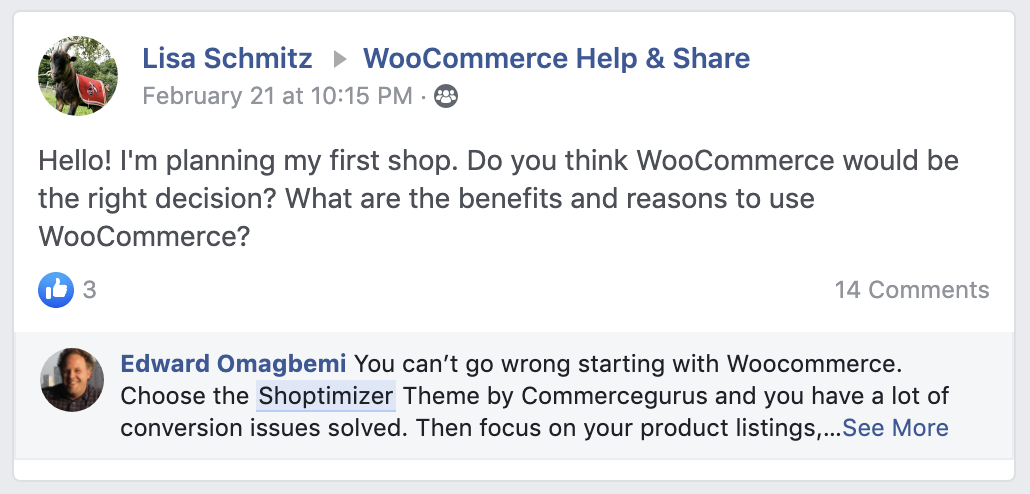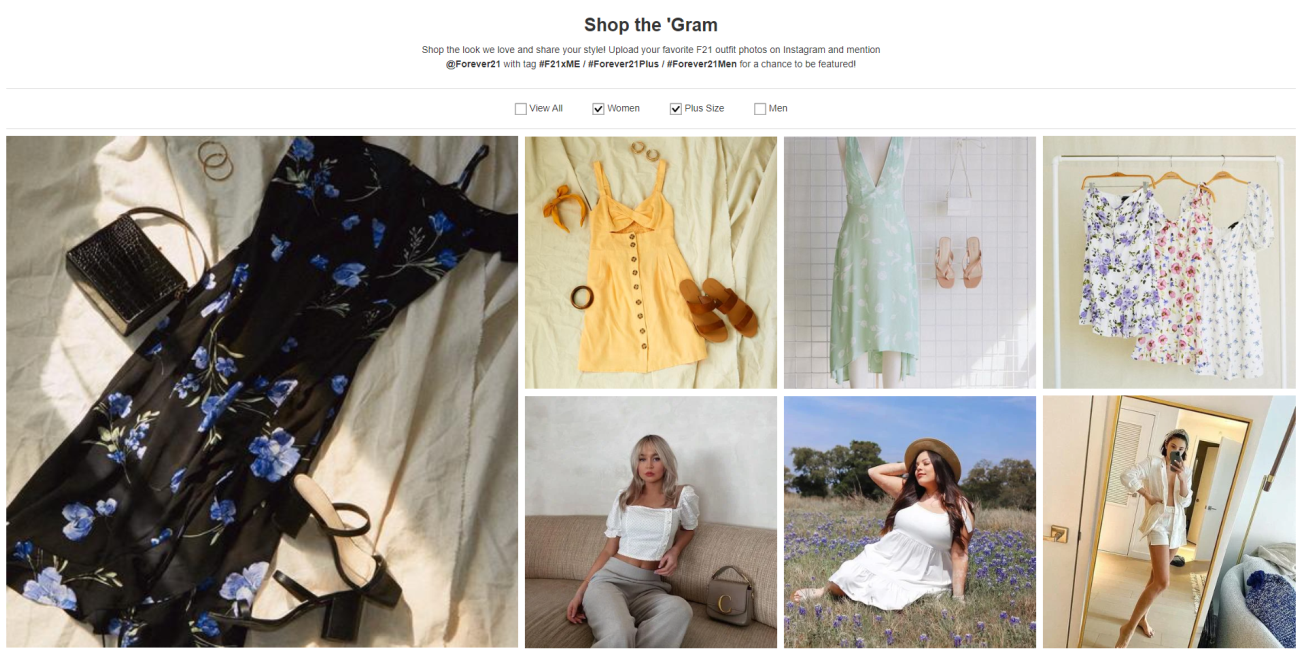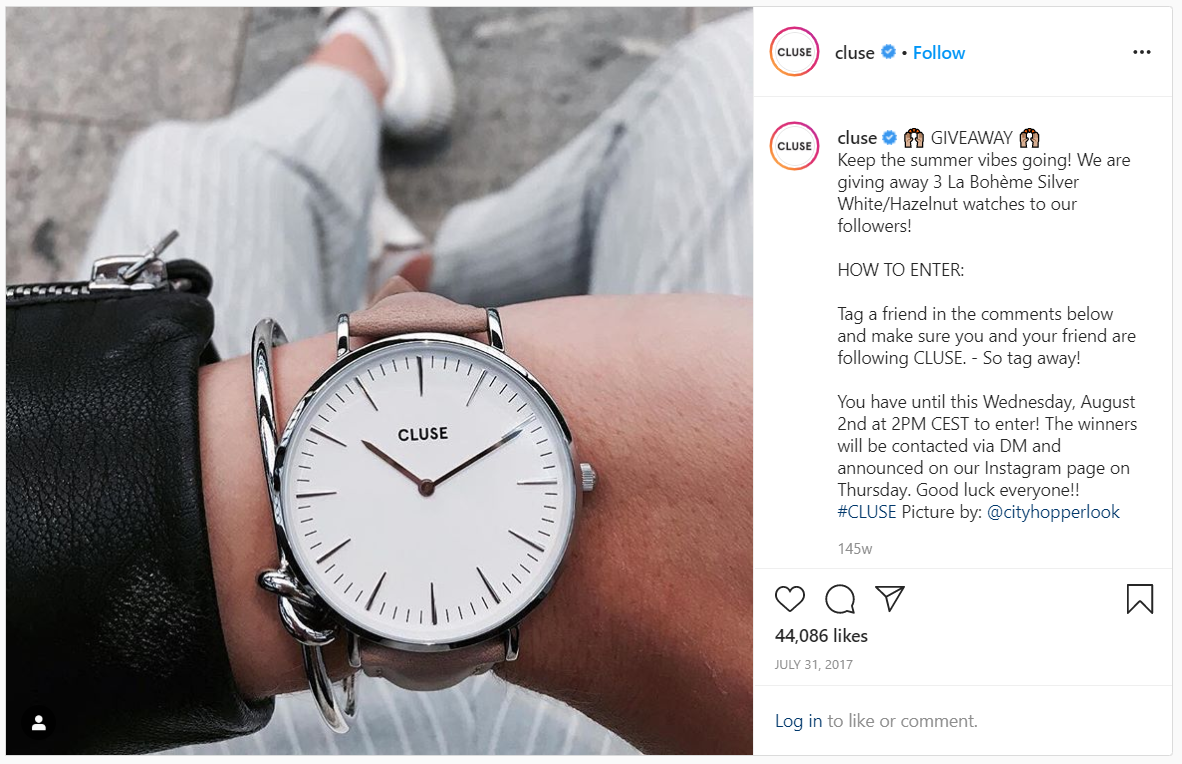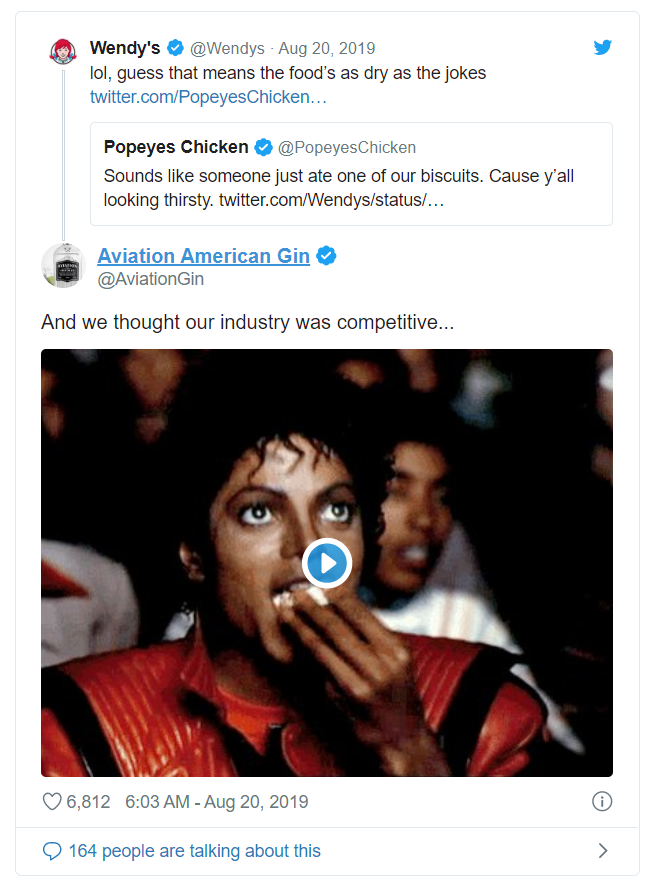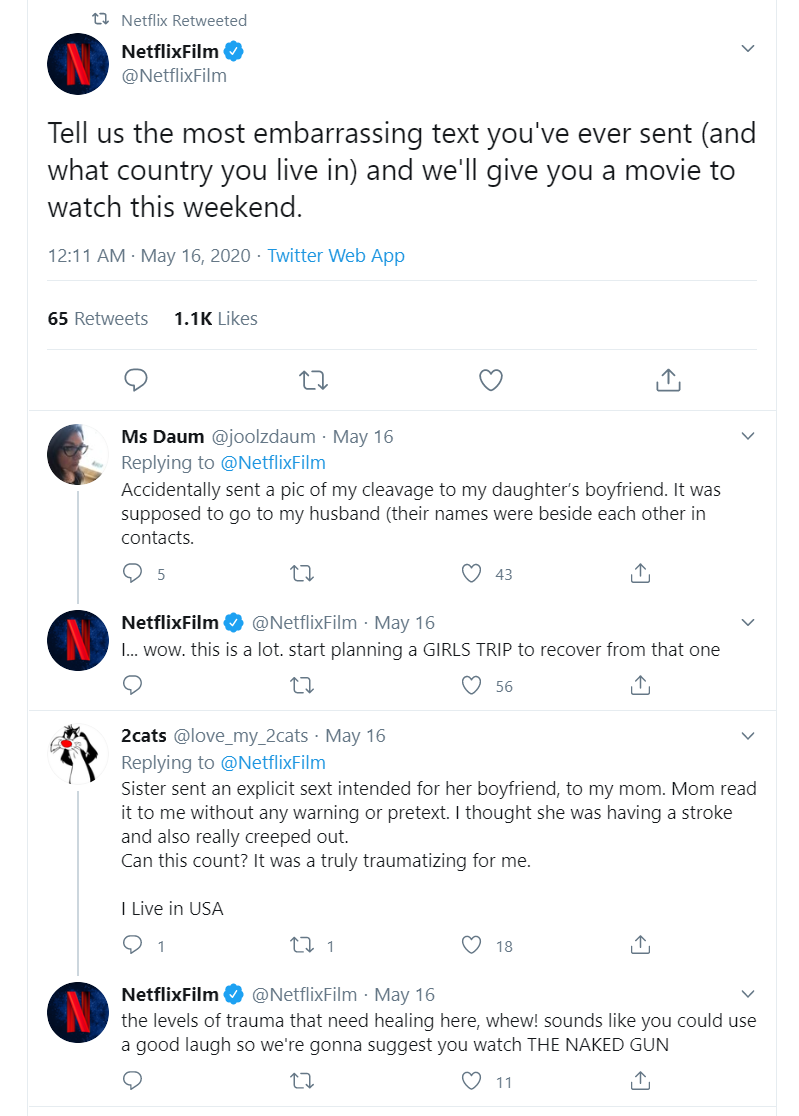Marketers and entrepreneurs dream of the days they see their campaign costs plunge and their growth rate skyrocket through word of mouth from customers and advocates.
Many brands go beyond dreaming and pursue word of mouth marketing strategies that actively give customers a reason to share their thoughts and support the brand.
Outlined below are some of the best examples of word of mouth marketing across a number of niches.
Muji — Word of mouth through store experience
Image Source
Muji is a popular Japanese lifestyle brand centred around an ethos of quality customer experience, timeless design and no advertising, a strategy that has allowed Muji to expand to over 900 stores in 26 countries since 1989. Muji’s success relies on word of mouth recommendations that come primarily from a relaxing store experience and simple product design.
The store experience resembles a spa more than a retailer. Shoppers are greeted with meditative music and a calming scent diffused throughout a store themed around neutral colours and soft lighting. The relaxing ambiance can serve as a much needed refuge from retail environments that expose shoppers to harsher lighting, upbeat music and a generally heightened tempo of buying.
The store experience also couples perfectly with the design language of Muji’s products. All products follow a similar design language of simple, neutral colours and natural themes are woven into each item. The store’s ambiance and the design of its products meld together perfectly to create a memorable and comfortable shopping experience for customers.
Although the company is facing growth troubles now, their commitment to customer experience and design allowed them to efficiently grow for decades without the need for heavy advertising spends.
Dropbox — Growth through referrals
Image Source
It is possible that no other company has ever implemented referrals as a word of mouth growth system better than Dropbox. Dropbox grew their user base from 100,000 to 4,000,000 in only 15 months through an incredibly effective referral strategy for a product that was difficult to market in 2008: personal cloud storage. While extremely useful, cloud storage was not something the average consumer understood or searched for, making it particularly difficult to spread through word of mouth.
In cases like this, word of mouth needs to be based on some sort of incentive or transactional benefit that is easily understood by both users and potential new customers—Dropbox managed to hit the bullseye after trying growth strategies that failed horribly.
Dropbox implemented a simple two-sided referral program that rewarded both the referrer and referee. While many brands have tried referrals, this word of mouth strategy worked so well because of the reward they chose as well as the referral user experience.
Firstly, Dropbox followed a cardinal rule of referrals: relevance. Instead of giving away t-shirts or mousepads, they gave users more of the product they signed up for in the first place, storage space. While this may seem like a simple decision, its impact was significant. Dropbox could already be confident that the incentive was appealing because customers had already signed up for their service, more storage would only make the service more useful. Storage space was also an efficient incentive for Dropbox as it is relatively inexpensive compared to purchasing merchandise and shipping it around the world.
Secondly, Dropbox made the referral process as easy as possible with an intuitive user experience and compelling copy. Immediately after signing up for an account, users were given the opportunity to get more space by referring friends directly or creating social posts through a link.
Ultimately, Dropbox nailed three tenets of effective referrals to achieve major growth:
- The product was desirable
- The incentive was related directly to customer needs and the product
- The user experience made referrals frictionless
OnePlus — Invite only releases
Image Source
OnePlus is known for creating smartphones that are “flagship killers” that compete with major brands like Apple and Samsung on performance, but at a much more affordable price point. They are a clear example of successful word of mouth marketing that combines status building with quality products to invoke desire and recommendation behaviour in potential buyers.
Customers couldn’t simply purchase a OnePlus phone when it was initially released—they had to receive an invite, typically from another customer. Customers flocked to social media and personal networks to lobby for an invite to purchase the phone and OnePlus found themselves in the middle of a terrific word of mouth marketing campaign.
The exclusive invite model drove word of mouth by creating a status benefit for customers that had invites to give, and a desire element for those who didn’t. Customers felt as if they had membership to a unique club and the power to bring others into that club.
The strategy paid off for OnePlus because they created a product that lived up to its promises, which boosted the brand’s value and made purchase invites a highly valued commodity. The OnePlus One was a genuinely high performance phone at a significantly lower price point, and had the benefit of using Google’s Android operating system to bring the brand a more trustworthy foundation.
Consumers have a plethora of choice in today’s smartphone market, but this was not the case when OnePlus launched. Apple and Samsung dominated global market share in 2014 with established brands like Motorola, LG and Sony filling much of the left over space. Brands would have to build great phones and spread their reputation quickly, which OnePlus successfully did through their invite system.
OnePlus still trails Samsung and Apple by a large margin, but they are now effectively competing against much larger brands in the premium smartphone market.
Supreme — Status through scarcity
Image Source
Supreme is perhaps the most powerful word of mouth marketing example when it comes to appealing to younger generations of buyers. The iconic “supreme red” coupled with simple white lettering grew astronomically from a small rebellious skateboard shop to an iconic luxury streetwear brand with a $1 billion valuation.
How has Supreme built a brand empire with minimal paid advertising? Similar to OnePlus, Supreme creates desire and sharable moments by boosting the status of their customers. Their word of mouth marketing strategy centres on achieving this through:
- Limited product runs
- High profile collaborations
- The use of queues and purchase events
Supreme releases a limited amount of products for their lines before discontinuing them. The fear of missing out compels customers to buy products as quickly as possible to avoid entering the extremely expensive resale market for Supreme products. These limitations also create exclusivity for Supreme fans—giving them more reason to show off products -especially unique ones like bricks and nun chucks- to their own friends and social networks.
With strong levels of desire for their products, Supreme creates conversations and buzz amidst the public by orchestrating long queues to get into stores to purchase products. Customers tend to wait in queues that are hundreds of people in length and can last the entire day—leading pedestrians and potential customers walking by to inquire about the brand.
Finally, Supreme uses strategic collaborations to get organic coverage from press and more demand from customers for rare collectable items. Luxury fashion producers like Louis Vuitton and streetwear leaders like Nike and Adidas have all launched collaborations with Supreme.
This calculated word of mouth marketing strategy requires deep dedication, but it has allowed Supreme to brand itself as both a cult brand and a worldwide titan of fashion.
Grenade Fitness — Word of mouth through compelling packaging
Image Source
Brands have often used unique packaging as a part of providing a premium customer experience, and with that experience comes many opportunities to spread through word of mouth. Unique packaging gives customers and potential buyers compelling reasons to take and share photos, and visually striking products are easy to recall in conversations.
Grenade Fitness grew in a cramped and competitive market by doubling-down on this strategy. The company’s weight-loss fitness supplements are packaged in containers that are shaped like hand grenades and the entire brand is built around military themes (including a pillbox designed to look like an ammunition container). These visual cues represent a stark contrast to most weight-loss products that are typically packaged in round tubs with neutral colour themes and clinical language, meaning Grenade products are more eye-catching on shelves and can appeal to new customer segments.
The key to Grenade’s success is its nuanced understanding of the market. While aggressive branding is common in many niches of fitness supplements, it is not common specifically in the weight-loss category that Grenade used as its beachhead into the market—they were not only more memorable and sharable than competitors, but could also appeal to untapped customer segments. The brand’s approach has paid off, they’ve now been featured as one of the fastest growing UK brands for international sales.
BrewDog — Mission-driven word of mouth
Image Source
Some companies tell effective and elegant stories about their mission to muster up buzz and get customers advocating for them, others opt for shock value and stunts that immediately capture attention. BrewDog has managed to do both.
The brewery leverages their punk lifestyle and values to deliver public shock campaigns including driving a tank through Camden Town in London and selling small-batch beers stored in deceased animals.
BrewDog’s word of mouth marketing strategy combines two different approaches: clarity of mission and controversial publicity. Customers that believe in a brand’s mission will be intrinsically driven to share products and make recommendations—as long as the brand continues to live up to those values.
Controversial publicity also creates compelling reasons for customers and the public to speak, argue and share their opinions. In BrewDog’s case, the use of visuals only made it easier to be featured by press and create shareable conversations. While controversy is a dangerous strategy for most, it worked for BrewDog because the ideals of the punk lifestyle are inherently rebellious and steeped in counter-culture.
Asking customers to advocate for a brand through word of mouth is to ask them to stake their reputation on a brand. It is a request that must be based on powerful incentives and appeal for a customer, whether that’s through a gift or the pursuit of a noble vision. Brands that can connect with the identity of their customers stand to build better word of mouth programs, and more organic growth as a result.
Word of mouth marketing is when a consumer’s interest is reflected in their everyday dialogue. It’s a low-cost (sometimes even free) and effective marketing method.
Many businesses consider word of mouth marketing the most valuable form of marketing because it enables you to spread good reviews about your product or service to a large audience, boosting brand awareness and loyalty.
Word of mouth marketing has been successfully used by many companies to get their customers to promote their brand by talking about experiences that they’d like to share with their friends and families.
Netflix, for example, used word of mouth marketing to make binge-watching popular with its organic tagline Netflix and chill. The company promoted it on social media which became a huge success.
In this article, we’ll take a closer look at how businesses have used word of mouth marketing to connect with their target audience and boost sales. Along the way, we’ll share actionable tips that you can use to engage customers with your brand.
But first, let’s quickly take a look at why word of mouth marketing is arguably one of the most valuable sources of advertising.
Why Is Word of Mouth Marketing Important?
Word of mouth marketing – also called word of mouth advertising – is a modern form of simple word of mouth. It’s one of the most effective forms of advertising for boosting brand recognition and sales.
Many businesses have adopted strategies that encourage customers to talk about positive experiences with their products.
According to HubSpot, consumers discuss specific brands casually around 90 times per week! The same study also reports that around 71% of people trust consumer reviews online. In simple words, consumers trust recommendations made by family and friends.
Word of mouth marketing is an honest promotion which helps you build trust with prospective customers. In fact, The Nielsen Company reports that 83% of customers trust recommendations from family, friends, and peers when making purchasing decisions. This goes to show that people don’t believe advertisements to the extent they trust suggestions from family and friends.
In the context of digital marketing, user-generated content is basically a form of word of mouth marketing that enables customers to promote your brand. And one of the most effective types of user-generated content is online reviews.
This involves existing customers sharing their positive experiences with your products and services with prospective customers. According to BrightLocal, 72% of respondents say positive product reviews boost their trust in a company.
Check out our in-depth article to learn more about how product reviews increase conversions.
Before we dig deeper into how you can come up with an effective word of mouth marketing strategy for your business, let’s quickly step through some of the advantages of word of mouth marketing.
Instills brand loyalty
Successful businesses, whether online or brick-and-mortar – quickly realize that loyal customers lead to positive word of mouth about their product. To make the most of it, they focus more on building customer loyalty.
The thing is, these businesses know that while people don’t always trust paid advertisements, they are much more likely to heed a recommendation by someone they trust. Trust drives consumer decisions and, in turn, sales.
Associating positive emotions with the brand through word of mouth can help differentiate them from the competition and enhance the company’s brand image.
It’s cost-effective
As mentioned earlier, word of mouth marketing is an inexpensive method of promoting your products and services. While businesses spend thousands (or even millions) of dollars to run TV or online marketing campaigns, word of mouth marketing is a comparatively low-cost strategy.
Moreover, it doesn’t cost the consumers anything to spread the word about your company or your products. This is precisely why more and more companies are relying on their customers to share good product experiences with their friends and families.
Builds a community of brand advocates
Word of mouth marketing can help you build a community of brand advocates. This means when customers purchase your product, they tell their friends, families, and peers about it and share their experience on social platforms. These customers will likely support and vouch for your product online as well as offline.
Take a look at how this customer recommends the Shoptimizer WooCommerce theme to a first-time online store owner and highlights its key advantage i.e. conversion optimization.
As a result, you can attract more and more consumers that will continue to interact with your brand post-purchase. A loyal community of fans stands as proof of your brand quality. It can help promote your brand and persuade others to buy your products, helping you increase customer retention.
3 Strategies for Word of Mouth Marketing
Here are some ways you can use word of mouth marketing to promote your brand.
#1: Ask for reviews
As a business owner, you should always be encouraging customers to leave a review. Online reviews are engaging, shareable, and (perhaps most importantly) unbiased.
You can use online product reviews to establish social proof. To take things up a notch, you can publish customer reviews and testimonials on your product pages and social media pages. This way, prospective customers will be more likely to purchase from you based on reviews they read from other people.
You can collect reviews and ratings on your product pages, social media, and email newsletters. CommerceKit, for example, is a powerful tool that can help you automatically collect reviews directly on your site.
Along the way, you might receive some negative reviews. But don’t worry, we got you! Check out our article on why a bad review is actually good for tips on how to interact with customers that leave negative reviews.
Online reviews aren’t the only type of user-generated content that can bolster your word of mouth marketing strategy.
Savvy digital marketers use social media to promote their content all the time. As your sales grow, you’ll notice customers sharing user-generated content on their social pages. This includes engaging and shareable content containing images, videos, Tweet threads, or Instagram captions that highlight their positive experience with your products.
Forever21 example
Apparel brand Forever21, for example, encourages buyers to share their style by uploading their favorite outfit photos on Instagram. Organic sharing like this is an effective way to boost your word of mouth outreach.
Promotional incentives, like coupons and exclusive discounts, are a great way to boost brand awareness. You can use your affiliate or referral program to give away points or perks for different types of user-generated content – more on this later.
Cluse example
Here’s how Cluse does it:
Cluse’s giveaway post encourages its followers to tag their friends in a user-generated content post and also asks them to get their friends to follow its Instagram page.
Check out our article on how to ask for a review for actionable tips!
#2: Interact over social media
When brands start or join conversations over social media, it generates many opportunities for word of mouth marketing. Positive and memorable social media interactions help build a community around the brand.
Aviation American Gin example
Last year, when Popeyes Chicken announced a new chicken sandwich, it started an online battle between two fast-food giants Wendy’s and Chick-fil-A. This gave Aviation American Gin a chance to get in the conversation in a playful way, and swoop thousands of valuable retweets on Twitter.
Aviation American Gin moved quickly at the fast-food heavyweights using other companies’ social posts to its advantage.
This is a great example of why word of mouth marketing is one of the most effective types of outreach. This sort of savvy social media campaign has helped the company attract the attention of a large number of social media users looking for entertaining content to consume and share online.
Netflix Film example
It’s simple, really. Social media offers a powerful medium to communicate with your target audience and build a strong and authentic brand image. You can use it to inform, educate, and entertain your consumers as well as find new customers by getting them to engage with your content.
Another way you can increase your brand recognition on social media is by creating a hashtag. Remember the Forever21 example? The apparel giant tells customers to upload their outfit photos using the hashtag #F21xME.
Hashtag campaigns are useful for building brand recognition and driving traffic. You can also use a hashtag on social platforms to start an online word of mouth campaign to share your promotional messages.
In other words, use your business hashtag every time you share a post on Instagram or Twitter and your customers will likely follow suit. Plus, hashtag feeds offer a quick and easy way to get in the conversations around your products. As a result, you can tap into conversations and respond to them in a timely manner. This, in turn, generates positive word of mouth from your customers!
Away example
A branded hashtag is a useful tool that can help you collect user-generated content. Here’s an example of Away using #travelaway in their Instagram post:
#3: Engage with consumers
A well-designed referral program can help you boost the results of your word of mouth marketing efforts. Encouraging existing customers to share positive words about you with their family, friends, and peers is a great way to attract new customers.
Your aim is to give customers a reason to share your brand with others, online or offline, and referral incentives are just the tools you need. You can offer coupons, credits, discounts, or free products to the referrer that leads to a purchase.
Similarly, you can incentivize customers to share user-generated content by tagging your brand on social posts or sharing product links on social pages.
7-Eleven example
The convenience store 7-Eleven encourages customers to post photos on social media using the hashtags #7ElevenDay, #TFW, and #slurplife for a free small Slurpee cup on July 11th.
Affiliate marketing is also a great way to acquire new customers. Here’s how you build an affiliate network: after you make a successful sale, ask the customer to refer their friend and earn a commission for the sale if their friend uses their referral link.
Niche bloggers can also help you promote your products on their blogs by including affiliate links in their content. Every sale leading from their referral will generate a commission for them while helping you boost your brand recognition.
You can also organize giveaways, contests, and lucky draws. All you have to do is tell customers to share user-generated content or the giveaway post on their social pages. This way, you’ll be able to get customers to interact with your brand and generate organic traffic along the way.
Examples of Word of Mouth Marketing
Here’s a quick question for you: What does a beverage company, a cloud storage solution, and a mattress manufacturer have in common? Word of mouth marketing.
Let’s take a look at how different types of companies use word of mouth marketing strategies to create positive feelings and emotions about their products.
Coca-Cola
It’s no secret that Coca-Cola is one of the world’s most popular drinks. Over the years, it has run multiple campaigns which have led to positive word of mouth promotion for the brand and increased the consumption of Coke worldwide.
Its “Share a Coke” campaign was launched in 2014 to get consumers to view Coke in a way that boosts its consumption i.e. by getting people to share it with their friends and family. Its social media campaign asked customers to find bottles with common names (and uncommon spellings of common names!) on them and share it online using the hashtag #ShareaCoke.
Dropbox
Dropbox is an online storage company that has successfully used word of mouth to attract a lot of new customers. It offered free storage space in the early days with bonus free space for referrals that drew a lot of attention.
It offered 500 MB extra storage space to new users and the people referred by them. This campaign led to rapid growth in Dropbox’s revenue.
Casper
Casper is an online company that produces mattresses, bedding, and other sleep-related products. For each of their mattresses, it offers a trial period for 100 days from purchase. Consumers can then decide to keep the mattress or return it.
This customer-focused approach has clicked with consumers who prefer testing a product’s comfort and durability. Casper also ran aggressive social media campaigns sharing customer reviews, helping it acquire more than one million customers in eight countries.
Conclusion
Word of mouth marketing is one of the most effective forms of marketing that involves giving customers reasons to share good opinions about your products with their friends and family. It helps you influence the customer’s purchase decisions, build trust, and boost brand awareness.
To recap, word of mouth marketing builds a community of brand advocates who vouch for your products online and offline. There are tons of ways to make your business a topic of conversation. Asking for reviews, interacting over social media, and engaging with consumers is just the tip of the iceberg.
Ready to collect reviews and leverage word of mouth marketing to increase sales? Sign up for CommerceKit updates as we build it!
Do you want to discover the world’s most reliable word-of-mouth marketing examples?
No, it’s not commercial ads or pay-per-click ads. The most dependable marketing tactic comes from other people you don’t even know. It’s all about word-of-mouth marketing.
Because word-of-mouth is in the hands of your market, it can be not easy to control at times. However, there are other ways for your company to benefit from word of mouth.
We’ll go over some of the most useful and successful examples of word-of-mouth marketing with WOM benefits and effective strategies below, and we’ll help you figure out which will work best for your company.
Let’s start with what word-of-mouth marketing is!
Word-of-mouth marketing, often known as word-of-mouth advertising, is a marketing approach based on personal references. Person X suggests that Person Y try your goods/services. They already trust the individual giving them the suggestion, so the brand they’re referring to benefits from that trust and credibility.
Because personal recommendations can be shared online—especially through social media. That’s why word-of-mouth marketing is now the easiest way to grow your business.
Many of these recommendations now come from a social media influencer, an online review, or a satisfied customer sharing their great experience. When done correctly, it can have massive consequences.
Here are a few examples of word-of-mouth marketing:
- An influencer uses your product and shares it with their followers.
- A consumer posts about your product on social media sites like Facebook, Twitter, and YouTube, among others.
- Your customer takes images and posts them on social media.
- A satisfied consumer posts a nice review on your Facebook page, Google Maps, Reddit, or another social media platform.
Social media allows marketers to deploy targeted campaigns and methods to promote and support word-of-mouth marketing online.
Why is word-of-mouth marketing important?
Word-of-mouth marketing is defined as a face-to-face interaction based on pre-established trust. It’s a low-cost technique to get the word out about your business and products to online and offline communities.
It should be top of mind for your marketing if it isn’t already. Word-of-mouth marketing is effective for:
- Low-cost marketing
- Promotes brand loyalty and
- Uncovers new ways to reach potential customers
According to a Nielsen survey, 92% of consumers trust recommendations from friends and family more than advertisements, proving the value of word-of-mouth marketing.
Benefits of word-of-mouth marketing
The benefits of word-of-mouth marketing are huge. When people talk positively about your product or brand, you might consider you’re on the right track to developing a brand name for your business.

Word-of-mouth marketing is the quickest and most reliable kind of marketing and is more beneficial than other marketing methods. That’s why here we are sharing the five benefits of word-of-mouth marketing.
Later in this article, we will also share a few word-of-mouth marketing examples.
Free promotion
Word-of-mouth marketing is a free promotion means of spreading product and service information. While most forms of marketing, such as print and TV or radio, involve an out-of-pocket investment, word-of-mouth marketing does not.
100% convinced they purposely made this with no music because they knew people would put other music over it and thus create free promotion from word of mouth….it worked XD https://t.co/HVOylizqNH
— Wing Wolf (Pay Me To Draw) 🏳️⚧️ (@GirlyWolfPup) March 7, 2022
Companies hope that by providing a high-quality product or service in a friendly manner, their satisfied customers will tell their families and friends about their positive customer experiences.
Boost search traffic
The brand, sales, and market presence will improve without spending money on advertising. What can be done to boost search traffic? It generally has much to do with being transparent about your company’s ideals.
Suppose you can hook clients with your goal, clever marketing, or a memorable event. Instead of spending a share of your revenue, you may boost search traffic for your site.
Social engagement
Communication and participation with members of an online community are referred to as social engagement. People do not utilize social media for a one-way exchange of information. They’re looking for people and brands to connect with.
Nowadays, word-of-mouth marketing strategy is the most important factor in boosting your social engagement. If you develop your product and market in a user-friendly way, your business’s social engagement will increase automatically. Ultimately this process helps your overall marketing and brand development process.
Grow brand image rapidly
In business, building your brand image is essential; it is how you grow in size and profit. Word-of-mouth promotion encourages people to talk about your brand and boosts sales, strengthening your company’s brand image. Your present and potential clients will more likely respond favourably to your products and services if you have a strong brand image.
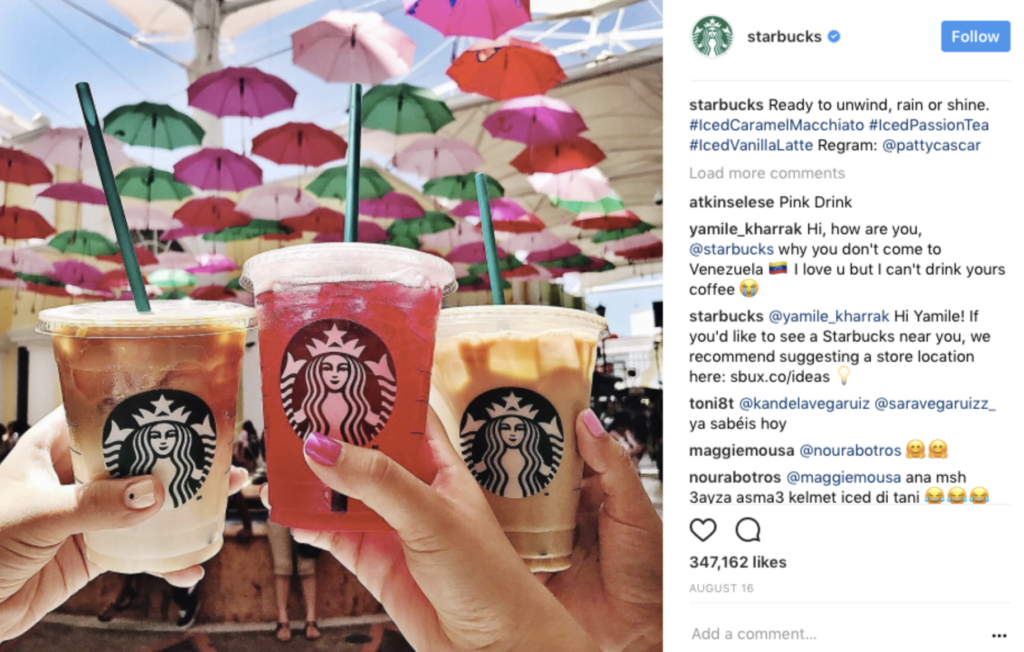
Word-of-mouth marketing may be a powerful tool for improving a company’s sales. You won’t get good referrals and publicity if you don’t give a nice client experience, no matter how amazing your website is or how effectively you operate your business.
Increase sales
Most importantly, positive word-of-marketing can help you increase sales. Most people seek advice from their friends and peers while making online purchases.
As a result, when someone asks for a recommendation, you will definitely share a good experience with your friend and family the way you have received it previously. Ultimately this process helps businesses to generate or increase sales.
How to implement the word-of-mouth marketing campaign
Companies must provide a product or service that people enjoy using. You don’t have to be the first, but you should ensure that your product is better than the competitors. Here are a few ideas for getting people to know how to implement the word-of-mouth marketing campaign.
Create hashtag
Let’s imagine you started a brand Instagram account for your business. Begin with a hashtag. It doesn’t have to be fancy; simply follow the hashtag with your brand, such as #WPSocialNinja. All posts will be from your business at first.
However, other people will undoubtedly begin to use your hashtag as well. Customers and admirers of your company’s speciality will frequently include your hashtag in their social media posts.
Hashtags are a simple yet powerful way to get your customers to share information about your company. As a result, the #hashtag will gain popularity.
Customer testimonials
Detailed customer testimonials can be a great way to spread word-of-mouth about your products and services. The authenticity and level of expectation are much better than anything else.
So if you want to implement your word-of-mouth promotion strategy on your brand without spending the money. You should use the customer testimonials options and display the best customer testimonials from great market leaders and valuable customers. This will improve the overall brand.
Run referral program
For today’s marketers, referral programs are one of the most common methods of gaining new customers. They’re also a standard component of many effective word-of-mouth marketing campaigns.
Customers are rewarded for referring friends and family to your company through a referral program. This exercise has the potential to generate strong word-of-mouth conversations about your brand along the way.
Collect reviews
As a word-of-mouth strategy, collecting reviews work well. The customer gives feedback on the product page for the product they purchased. The post is then seen by store visitors, who may be motivated to buy the goods based on the customer evaluations they’ve read.
Customers that write negative evaluations will be directed to your customer service department so that you can improve their customer experience.
Apply influencer marketing
Influencer marketing is for you if you seek a sustainable word-of-mouth marketing strategy.
You’ll have to pay an influencer to feature your products on their social media if you want to use influencer marketing. You can control what they post and how they post it because you’re paying them.
The nice part about word-of-mouth marketing is that you can pay to start a talk about your product and possibly make some purchases.
Provide quality customer service
Another important factor to consider before starting your WOM marketing campaign is that even if you have the best product in the world, if your brand is a hassle to work with, people will not return to buy with you. They will also refrain from recommending your business or items to others.
After all, the world’s internet retailers number over 9.1 million. At least one of them must sell the same products as you. You can anticipate new customers to go to them instead of you if they deliver better customer service to their present clients and share a nice online review.
Customers will gladly talk about your customer service if your business and product are excellent enough and have an influence on their life.
Be social on social media
You’ll need to communicate with your clients regularly if you manage an online business. Having a friendly and active relationship with them while producing high-quality content for your social media presence is important.
To catch your customers’ attention, you should share aesthetically pleasing photographs, shoppable product images, videos, and graphics, depending on your goals. You know that displaying social media presence like your social feeds and reviews takes time and effort.
You may speed up the process by exploring relevant social media plugins depending on your company’s needs.
Five positive word-of-mouth marketing examples
If you have a good experience with a company, you might tell a friend or family member about it. This is word-of-mouth marketing. Businesses can persuade customers to perform the work for them. Which brands are the successors of word-of-mouth marketing?
Here are five positive word-of-mouth marketing examples from past years.
Teslas referral program
Tesla has a marketing budget of zero dollars. Are they insane? Other automakers have multibillion-dollar marketing budgets and often spend money on billboards, magazines, and television to promote their products. Without advertising, how can Tesla compete in the auto industry? And, perhaps more crucially, how did Tesla achieve growth and a massive ROI on a $0 advertising budget?
The simple and clear solution: Tesla established a strong customer-centric referral program. Although word-of-mouth marketing has been around for a long time, it has never been used for a big purchase like a car. Tesla, on the other hand, made it work.
Before the business launched a referral program, Tesla owners had already informed their friends about their cars through word-of-mouth. Tesla encouraged the advocacy by introducing a referral program that offered meaningful, unique, and exclusive prizes.
Here’s how Tesla made referral marketing an important element of its growth strategy:
Referral program 1: New Tesla customers get a $1,000 credit. Referrers received a $1,000 Tesla credit. Tesla’s original referral program offered straightforward, two-sided incentives. A customer’s only opportunity to get a discount on Tesla products is through the referral program.
Referral program 2: New Tesla customers get a $1,000 credit. The referrer with the most referrals in each region (North America, Europe, and Asia) won a fantastic prize: a new Tesla P90 Model S, a home charger, and a trip to the Gigafactory’s grand opening.
Referral program 3: New Tesla customers received a $1,200 credit. Referrers are entered into a lottery for a chance to win a tour of SpaceX’s headquarters.
Tesla’s third referral program rewarded Tesla supporters with non-monetary, experiential prizes. A tour of SpaceX was appealing because it reinforced Tesla’s brand identity as a forward-thinking innovator in the field of zero-emission vehicles.
Coca-Cola and share a coke campaign
Coca-Cola set a good ground for word-of-mouth marketing examples. The ‘Share a Coke’ campaign began in Australia in 2011, with the usual Coca-Cola bottle wrapper being replaced with the words ‘Share a Coke with…’ and a popular name. The campaign aimed to build a more intimate relationship with customers and inspire shared happy experiences.
The top 150 most popular names in Australia were printed on millions of bottles, and the campaign was so well-received that it was copied by other countries worldwide with its twists.
For example, Israel’s largest billboards were converted into interactive signs that greeted inhabitants by name. China also printed nicknames instead of first names on their bottles, creating an even more personalized touch.
The ‘Share a Coke and a Song’ campaign, which featured popular song lyrics printed on Coke bottles, was launched in the United States in 2016. With Selena Gomez posted a photo for the campaign, the campaign became the most-liked photo on Instagram at the time.
In 2017, a new campaign version was released in the United Kingdom. There were 75 holiday destinations instead of names or songs printed on the labels. That was a great approach to word-of-mouth marketing examples.
Netflix’s marketing plan
Whether you’re a big fan of television shows or not, you’ve undoubtedly heard about Netflix’s Squid game. Squid Games has become one of the year’s most talked-about issues.
The success of one of the all-time great advertising strategies that your brand or business may utilize to enhance sales and organic publicity.
Despite its reputation as a minor component of many marketing plans, Netflix’s Squid Game proved that it might be a major driving force in advertising. Because marketing organizations can’t buy or certain word-of-mouth marketing strategies, it’s usually done organically. However, now that social media is so accessible to brands, businesses might try to start a wave of trends or buzz to get word-of-mouth going.
Squid Game was brought to our attention by family and friends who couldn’t stop talking about it. Countless memes are saturating news feeds on social media platforms such as Twitter, Facebook, Instagram, and TikTok. It was a great source of word-of-mouth marketing examples.
We had to give the TV show a shot as well. When a TV show is followed by trends and memes, it almost drives you to want to watch the show so that you can relate to the people around you and understand the jokes being given.
The basic fact is that no paid ad campaign of any size could reach the level of success that Squid Game did only through word-of-mouth, and there is a science to back this up. Make your campaign so specific that your target audience becomes an enthusiastic supporter of the story.
Amazon word-of-mouth marketing
We have also selected Amazon’s story for the criteria of word-of-mouth marketing examples. Word-of-mouth is one of the most basic forms of marketing, but it’s also one of the most effective. People enjoy telling people about their new purchases, and one of the first inquiries they receive is, “where did you buy it?” When customers shop on the Amazon platform, they often have a great experience, making them more inclined to suggest it to their friends and family.
Jeff Bezos recognized from the start that the customer experience would be critical in determining whether or not his customers would spread the word about Amazon. He integrated customer experience into his marketing plan from the start by including it in his goal statement:
“To have the world’s largest selection and be the world’s most customer-focused organization.”
However, simply having the “world’s largest assortment” is not enough to be a successful marketing strategy—Amazon needed to build consumer loyalty and encourage repeat purchases.
One piece of this loyalty pie is the word-of-mouth recommendations their platform and shopping experience create. By making it easy to check out and get their merchandise, their customers rave about the shopping experience.
And recommendations are potent marketing tools, and approximately 90% of people will trust a brand recommended to them even if recommended by a stranger. Word-of-mouth marketing strategy drives roughly 13% of all sales globally, which amounts to approximately $6 trillion annually.
Amazon utilizes word-of-mouth and word-of-mouth marketing examples in various ways. One option is for customers who have had a good experience on the platform to promote it to their friends and relatives.
Starbucks builds empire on word-of-mouth
Starbucks began as a small shop in Seattle over 30 years ago. Regarding word-of-mouth marketing, they did not use traditional methods; instead, they devised an innovative marketing plan that fits perfectly with the concept they intended to communicate.
How often have you noticed a Starbucks Latte billboard while driving down the road? Consider ad slots in magazines, newspapers, or any other area where you may expect to find a commercial.
When Starbucks first opened its doors over 30 years ago, it never ran ads in newspapers, never put up billboards on the highway, and advertising was not done the way it is now.
Starbucks built only one experience for its customers, aiming to provide them with a place they could call their “third home.”It reflects the definition of customer service; they know who their customers are and work to ensure that no one has a negative experience when they leave.
Yes, Starbucks is costly, but customers keep going back for more. Why? Because they provide a high-quality product and work tirelessly to ensure you get the “perfect cup of coffee” every time.
They provided you with an experience, service, and product that made you happy, made you talk about it, and you helped shape Starbucks into who they are today.
It only took a few folks who came in for a cup of coffee, had a memorable experience, and told their friends and family about it.
Word-of-mouth marketing examples and the overall marketing process are quite effective. WOM has the power to move mountains and create or ruin a company.
You are word of mouth, and I am word of mouth. It’s wonderful to see entrepreneurs recognize that their company’s success isn’t simply dependent on them; it also depends on us.
Word of mouth marketing example: Key takeaways
Building a community through word-of-mouth marketing is important to any successful marketing strategy. However, with such quick successes, word-of-mouth marketing examples may be easily integrated into a larger brand plan.
Following these strategies can help your brand produce word-of-mouth marketing based on the 5 word-of-mouth marketing examples listed above.
- Research your target market
- Let consumers drive your success
- Make your goods or service stand out from the crowd
- Always provide value to your customers, and know who your target market is
- To generate buzz, use social media and experiences intelligently
- Connect with your audience on a personal level
- Create a referral program to encourage sharing and make it as simple as possible to spread the word about your company
Bonus tips: For word-of-mouth marketing
We’ve already covered topics such as word-of-mouth marketing, why it’s important for business, how to implement the concept, and, most importantly, examples of word-of-mouth marketing.
We suggest you use a social media plugin to take your marketing strategy to the next level. Try WP Social Ninna, the all-in-one social solution for your website. This plugin is a feature-packed tool that allows your user to integrate 4+ social feeds, 10+ social reviews, and 15+ social chat widgets.
Using this powerful plugin, you can gain solid credibility from your consumer base. You can also include a Testimonial feature, a Notification Popup, and Global Translation options, all of which will facilitate your business in creating a successful marketing campaign.
This will contribute to creating word-of-mouth marketing and increasing sales.
Visit our online community to learn more about how we can support your business’s social presence and activity.
What is Word of Mouth Marketing?
Word of Mouth Marketing (WOMM) is when a product influenced the customers so much that it becomes their routine dialogue. The customer keeps on sharing his experiences with others and advertises the product in the disguise. Companies and businesses encourage word of mouth marketing by organizing events, where customers communicate with other customers and influence their decision.
Who Uses Word of Mouth Marketing
Word of mouth marketing is when customers share their product experience with their friends and relatives. According to an estimate, 92% of the people trust their friends rather than media. That’s why companies and businesses encourage WOM marketing by providing a quality product to the customers.
By encouragement I mean that companies provide new insightful information about the product that customers aren’t aware of. They also teach customers the new techniques and methods of sharing information about the product to influence their decision.
How Effective is Word of Mouth Marketing?
Here are some of the statistics of the word of mouth marketing that will help you to analyze its effectiveness.
- According to a study, 13% of the total annual consumer sale comes from WOM marketing with the worth of 6 trillion US dollars.
- WOM marketing generates 5 times more sales than the paid media campaigns, and people trust and buy recommended products 90%.
- 88% of the people put a high level of trust in the people that they know.
- A company that emotionally connects with customers generates 3 times more sales than the brand that does not.
- 28% of the customers say that WOM marketing is a significant factor influencing their brand affinity.
- 64% of marketers believe that WOM marketing is a very effective marketing tool.
- 70% of the marketers are planning to increase their spending on online WOM marketing, and 29% of the marketers are planning to spend on offline WOM marketing.
- 80% of the advertisers use WOM marketing for brand awareness, and 43% of the marketers use WOM marketing for direct sales.
Word of Mouth Marketing Strategies
Here are some of the following word of mouth marketing strategies that you should use;
Offer Something Unique
You should come up with something unique and different and offer it to the customers, that would amaze people and they would share their experience with others. It doesn’t mean that you have to redo everything again, just work on some old ideas and present it differently. Or you should follow some different marketing strategies.
Rating and Reviews System
Sometimes people like your product, but they won’t recommend it to dozens of their friends and family members. It means that you can use their feedback for your marketing purposes. According to a study conducted by Bright Local’s Customer Review Survey in 2017;
- An average person studies at 7 reviews before trusting any brand.
- 85% of people trust online reviews like real-life recommendations.
- 49% of the people think that a 4-star rating is a minimum requirement for the purchase decision.
Tap into People Emotions
Emotionally connecting with your customers is a very powerful tool that would make customers talk about the company’s product. It could be a common belief that the company’s product and customers have in common.
For instance, e-commerce retailer ‘Ben & Jerry’s’ emotionally connect themselves with customers by showing them that they’re environmentalists.
Referral Program
A referral program is a great idea of convincing people to refer the company’s product with their social circle. But if you attach rewards with more referral and successful conversion, then people would take it seriously to win the rewards because they are a great source of motivation. Rewards could be in the form of bonuses, cash prizes, gifts, or discounts. Referring programs should be simple and done with few clicks.
Offer Incentives
If you offer incentives to the customers that would do WOM marketing for your brand, then more and more people would be willing to do it. It doesn’t matter that incentives are big or small; customers would do WOM marketing for you if they get something in return.
You should offer discounts to your customers if they do refer.
Connect with Industry Influencers
You should connect with those people that have a great influence over the public and also have a plethora of following. It means that their platform is well established, if they do WOM marketing for your brand, then it would have a major influence.
Mention, tag, and feature those influencers in your content, and provide them free services that they would actively engage.
Focus on User Generated Content
User-generated content means that the content relevant to your product generated by customers. It could be random and poorly worded, but honestly that would attract customers. You can identify customers’ content by using the hashtag, offer rewards to those who would create content like social media post, picture, or gif, and make them feel that you are a part of their community.
Advantages of of Word of Mouth
Some of the advantages of word-of-mouth marketing are as follows;
Trust
People are willing to trust something when they see other people happy using the same product. According to an advertising report prepared by Nielsen Global Trust that 92% of the people follow the recommendation of their friends and family, rather than traditional marketing. Word of marketing takes a turn in the age of science and technology by forcing marketers to rely on the referral of their customers.
Lost Cost
The marketing and advertising budget of companies comprise of hundred and thousands of dollars. WOM marketing and referral programs don’t have any cost compare to them. Like email marketing or social media marketing, you just have to create engaging content and send it to the customers.
Long-term Value
According to a study on integrated marketing and sales conducted by the University of North Carolina that the people who purchase your brand’s product through referrals are more likely to purchase it again than those who are through media and advertising. It is because referral marketing attaches a memory of a referring person. Therefore, referring memory lasts longer than an ordinary advertisement.
Branding
A market comprises a lot of big competitors; it becomes difficult for a small business owner to establish his brand. However, WOM marketing and referral provides a unique touch to your brand. It could be in the form of tips, articles, or other materials that interest people, and they would share it with friends.
Disadvantages of Word of Mouth
Some of the disadvantages of word-of-mouth marketing are as follows;
Slow & Limited
WOM marketing is good, you can’t expect it to reach and influence everyone through it. It works slowly and it has a limited reach. The electronic version of the referral program is much faster, and it doesn’t guarantee the conversion. There’s a limit to one’s contact, and it would work in the beginning but not in the long term.
Time is very important for new businesses. If your business doesn’t produce something in the beginning, then it would keep on accumulating expenses. WOM marketing works, but it is slower and you never know whether it works or not.
Difficult to Track
It’s difficult to track the conversion rate from the referrals. Small businesses don’t have the expertise of whether the converts are either from the referral or the new ones. George Silverman said that you would need to know not only what is said but who said it, and the sequence of information should continue. The reason that you require such information is that you would it for planning in the future.
Bad reviews
Bad reviews and negative feedback of unsatisfied customers can badly impact the overall performance of your business. It would also discourage and create doubts in the minds of new customers. They would run away before even check it out your product/service, and they would also share the bad experience among their social circle.
Word of Mouth Marketing Examples
ALS Ice Bucket Challenge
ALS launched a challenge of pouring ice bucket over you in 2014, the participant has to make a video and send it to them. The purpose was to raise funding, people across the world participated in the contest. The campaign was a great success over social media and it collected 115 million US dollars in 8 weeks.
Netflix
Netflix studies the pattern of shows that people watch and then recommend similar shows to them. The regular watchers of Netflix share their experiences over social media, and Netflix targets the social circles of its followers.
Slack
Slack is a great tool for small businesses that they can use it for free in the beginning, but it depends on the referrals and WOM marketing. Now, slack has a much wider audience because of its referral programs.
Conclusion
If you are a small business owner, then word of mouth marketing is a great tool for you to reach more people. But you can’t rely on them forever because it has a limited range. Eventually you would need paid media to go beyond. Most importantly, you should be certain about the performance of your product, because negative marketing spread much faster than positive referrals.
Word-of-mouth marketing is a marketing method that encompasses any and all ways people talk about your company with others. It’s a marketing method that organically drives discussions about your business.
A word-of-mouth marketing strategy is a plan to generate buzz and interest in a product or service through organic, viral methods. This can be done through online channels like social media and forums, or offline through face-to-face interactions and events.
Definition
Word-of-mouth marketing is defined as a marketing strategy that brands use to encourage, influence, or impress people or target audiences to organically talk about your brand, product, service, campaign, event, or experience with others.
This marketing strategy is usually used to generate more interest in what you’re offering, to increase sales or conversions, or simply to get your name out there. Word-of-mouth marketing can be a very effective way to promote your business. After all, people are more likely to listen to and trust recommendations from people they know, rather than a faceless company.
Why Word-of-Mouth Strategy Matters for Retailers
There are a few key reasons why retailers should focus on word-of-mouth advertising:
- It’s cost-effective. Word-of-mouth marketing is one of the most cost-effective marketing strategies there is. It doesn’t require a big budget, and it can be done through organic channels like social media, online forums, and face-to-face interactions.
- It’s credible. People are more likely to listen to and trust recommendations from people they know, rather than a faceless company. Word-of-mouth marketing can help build trust and credibility for your brand.
- It’s viral. Word-of-mouth marketing is a form of organic or viral marketing. It’s a way to organically spread the word about your brand or product through social interactions. If people are talking about your brand, it can quickly lead to more people talking about your brand.
- It’s trackable. With the right tools, you can track word-of-mouth marketing campaigns and measure their effectiveness. This data can be used to improve future campaigns.
How to Build Word-of-Mouth Marketing Strategies
There are a few key things you can do to build word-of-mouth marketing strategies
1. Make it easy for people to talk about your brand
Make sure your branding is strong and easily recognizable. Use social media, online forums, and face-to-face interactions to get people talking about your brand.
2. Create shareable content
Create content that is interesting, informative, and shareable. This could be blog posts, infographics, videos, or any other type of content that people will want to share with others.
3. Focus on customer service
Giving outstanding customer service is a great way to get people talking about your brand. Word-of-mouth marketing is all about creating positive experiences that people will want to share with others.
4. Host events and meetups
Hosting events and meetups is a great way to get people talking about your brand in person. This could be anything from a simple meetup to a larger conference or event.
5. Offer incentives and discounts
Offering incentives and discounts are a great way to get people talking about your brand. This could be anything from a simple discount code to a more elaborate referral program.
6. Keep track of your progress
Keep track of your word-of-mouth marketing campaigns with the help of social media analytics, Google Analytics, and other tools. This data can be used to improve future campaigns.
Word-of-Mouth Marketing Strategies
Some of the ways to make and use word-of-mouth marketing strategies are
1. Create triggers for word of mouth
Make sure your branding is strong and easily recognizable. Use social media, online forums, and face-to-face interactions to get people talking about your brand.
2. Monitor mentions and responds ASAP to keep conversations rolling
Keep track of your word-of-mouth marketing campaigns with the help of social media analytics, Google Analytics, and other tools. This data can be used to improve future campaigns.
3. Appeal to your audience
Create content that is interesting, informative, and shareable. This could be blog posts, infographics, videos, or any other type of content that people will want to share with others.
4. Provide value to customers
Giving outstanding customer service is a great way to get people talking about your brand. Word-of-mouth marketing is all about creating positive experiences that people will want to share with others.
5. Actively gather and curate user-generated content
Offering incentives and discounts are a great way to get people talking about your brand. This could be anything from a simple discount code to a more elaborate referral program.
6. Tap into emotion
Focus on creating emotional connections with your audience. This could be anything from evoking happiness or laughter to tugging at heartstrings. Emotional content is more likely to be shared than rational content.
7. Get product ratings on your site
Including customer ratings and reviews on your site can help to increase word-of-mouth marketing. This is because potential customers will see that others have had positive experiences with your brand.
8. Encourage user-generated content (UGC)
Encouraging users to generate their own content, such as blog posts, videos, or photos, is a great way to get people talking about your brand. This is because it helps to create a sense of community around your brand.
9. Ask for reviews and recommendations directly
Asking customers for reviews and recommendations is a great way to get people talking about your brand. This is because it helps to create social proof around your brand.
10. Tell your story
Telling your brand’s story is a great way to get people talking about your business. This is because it helps to create an emotional connection with your audience.
11. Extend your brand’s reach through employee advocacy
Encouraging employees to talk about your brand is a great way to extend your reach. This is because employees are trusted sources of information.
12. Create exclusivity
Creating a sense of exclusivity around your brand is a great way to get people talking about your business. This could be anything from offering exclusive discounts to VIP members.
13. Assemble your army of influencers and brand ambassadors
Working with influencers and brand ambassadors is a great way to get people talking about your brand. This is because they have a large reach and can help to create social proof around your brand.
14. Boost positive social comments and customer stories
Highlighting positive social comments and customer stories is a great way to get people talking about your brand. This is because it helps to create a sense of community around your brand.
15. Provide customer service that over-delivers
When customers are happy with your product or service, they’re more likely to tell their friends and family about it. This word-of-mouth marketing is incredibly valuable, as it can help attract new customers and create loyalty among your existing customer base. Word-of-mouth marketing is all about creating positive experiences that people will want to share with others.
16. Create hashtags
Creating branded hashtags is a great way to get people to talk about your brand. This is because it helps to create a sense of community around your brand.
17. Offer freebies
Offering freebies is a great way to get people talking about your brand. This could be anything from a free product sample to a discount code.
18. Conduct giveaways and contests
Conducting giveaways and contests is a great way to get people talking about your brand. This is because it helps to create a sense of community around your brand.
19. Focus on creating great content
Content is king when it comes to Word-of-Mouth Marketing. This is because great content is something that people will want to share with others.
20. Make it easy to share your content
Make sure that your content is easy to share by using social sharing buttons or embeddable links. This will make it more likely for people to share your content with their social network.
21. Use influencers and brand ambassadors
Working with influencers and brand ambassadors is a great way to get your content seen by more people. This is because they have a large reach and can help to promote your brand.
Word-of-Mouth Marketing and Referral Marketing
are two terms that are often used interchangeably, but they actually refer to two different types of marketing. Word-of-Mouth Marketing is when customers talk about your brand to their friends, family, and acquaintances. Referral Marketing is when customers share your brand with their social network through a link or code.
While Word-of-Mouth Marketing can be more organic and happen naturally, Referral Marketing is more structured and deliberate. Both Word-of-Mouth Marketing and Referral Marketing can be extremely effective in growing your business.
Examples of Word-of-Mouth Marketing Campaigns
1. Coca-Cola’s Share a Coke campaign:
Coca-Cola’s Share a Coke campaign was a Word-of-Mouth Marketing campaign that encouraged people to share photos of themselves drinking Coca-Cola with their friends. The campaign was extremely successful, generating millions of social media impressions and increasing sales by 3%.
2. Ford’s Word of Mouth Marketing campaign
Ford’s Word of Mouth Marketing campaign was a brand-advocate-based Referral Marketing campaign that also channelized influencer movements. Using referral programs was also useful for the business model. The campaign was successful, generating over 1 million leads.
3. Netflix
Netflix understands its customers’ wants and needs by using the data they provide. This way, Netflix not only recommends shows to users but creates entire seasons of new content that is suited to the platform’s biggest interests. Using this data in a logical manner, the firm has been able to improve consumer sentiment, resulting in an army of Netflix influencers who extol the company’s virtues on several social media platforms. This free advertising has allowed the business to expand rapidly beyond its competitors such as Amazon Prime, Hulu, and even YouTube.
4. Sephora’s Beauty Talk Word of Mouth Marketing campaign
Sephora’s Beauty Talk Word-of-Mouth Marketing campaign was a Word-of-Mouth Marketing campaign that encouraged customers to share their favorite Sephora products with their friends. The campaign was successful, generating millions of social media impressions and increasing sales by 5%.
5. Dunkin’ Donuts
Not only is Dunkin’ Donuts a vital part of American culture, but it has become a tourist destination for many. The delicious and affordable product has been made into a brand that Americans love, with staunch followers around the world. Thanks to these amazing people, Dunkin’ Donuts have found innovative ways to utilize word-of-mouth marketing. Social media is a powerful platform for brands to connect with their customers. By posting unique content and running competitions, followers are encouraged to engage with the brand on a regular basis. This can involve liking or sharing content, or even creating their own around the brand to show their experience. For example, one company’s hard work paid off with 15 million Facebook fans, 1.5 million Instagram followers, and 1.2 million Twitter followers.
Here is a video by Marketing91 on Word of mouth Marketing.
Benefits of Word-of-Mouth Marketing
1. Increased trust and brand visibility
When potential customers see that their friends, relatives, or other people they know and trust are talking about your brand, they’re more likely to pay attention. Word-of-mouth marketing can help increase trust in your brand, as well as brand visibility.
2. Make a meaningful impact on customers through authenticity
People can smell in authenticity from a mile away. Word-of-mouth marketing is an opportunity to make a meaningful impact on potential customers by being authentic and transparent. When people see that you’re genuine, they’re more likely to trust you and do business with you.
3. Earn long-term brand loyalty
People are more likely to be loyal to a brand that they trust. Word-of-mouth marketing can help you earn long-term brand loyalty from customers. If you can get people talking about your brand, you’re more likely to keep them as customers for the long haul.
4. Get more bang for your buck
Word-of-mouth marketing is one of the most cost-effective marketing strategies there is. It doesn’t require a big budget, and it can be done through organic channels like social media, online forums, and face-to-face interactions.
5. Reach a wider audience
Word-of-mouth marketing can help you reach a wider audience than you would with traditional marketing methods. If people are talking about your brand, it can quickly lead to more people talking about your brand.
6. Boost sales and conversions
If done right, word-of-mouth marketing can be a powerful tool for boosting sales and conversions. People are more likely to listen to and trust recommendations from people they know, rather than a faceless company.
7. Get feedback and improve your product
Word-of-mouth marketing can also be a way to get feedback about your product or service. If people are talking about your brand, you can quickly learn what they like and don’t like. This data can be used to improve your product or service.
8. Drive social media engagement
Word-of-mouth marketing can help drive social media engagement. When people are talking about your brand, they’re more likely to share it on social media. This can help increase your reach and get more people talking about your brand.
9. Word of mouth is the most powerful form of marketing
Last but not least, word of mouth is the most powerful form of marketing. It’s trusted, authentic, and free. What more could you ask for? If you can get people talking about your brand, you’re on your way to success.
Conclusion!
Word-of-mouth or WOM marketing is still one of the most powerful tools in a business’s arsenal to optimize a business or brand presence via positive organic word. In the digital and social media marketing age, it has taken on a new form, but the bottom line is that satisfied customers lead to new customers.
There are a few key things to remember when pursuing word-of-mouth marketing:
- First, focus on creating satisfied customers. This is the foundation of any good word-of-mouth marketing strategy.
- Second, take advantage of social media and online reviews. Make it easy for customers to leave positive reviews and word-of-mouth recommendations.
- Finally, focus on customer loyalty. Once you have a satisfied customer, work hard to keep them coming back.
By following these tips, you can tap into the power of word-of-mouth marketing and create a steady stream of new customers.
What are your thoughts on word-of-mouth marketing? Let us know in the comments below!
Liked this post? Check out these detailed articles on Topic of Marketing
Alternatively, check out the Marketing91 Academy, which provides you access to 10+ marketing courses and 100s of Case studies.

